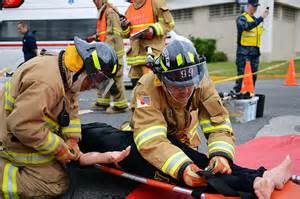 Remember when you were in school and they’d run fire drills? Everyone would walk out of the classroom single-file, alarms blaring over the intercom, and then you’d all just stand out in the soccer field for ten, twenty minutes while the teachers counted heads.
Remember when you were in school and they’d run fire drills? Everyone would walk out of the classroom single-file, alarms blaring over the intercom, and then you’d all just stand out in the soccer field for ten, twenty minutes while the teachers counted heads.
Were these drills really of any use? Did they ever save any lives? Or were they just a way to break up the monotony of schoolwork and let the teachers step outside for a smoke?
Well, hiding under your desk like a Cold War kid isn’t going to shield you from an atomic blast, but believe it or not, safety drilling really can help, when you’re practicing a reasonable response to a realistic threat. Here’s what you need to know about safety drills.
- It’s more of a troubleshoot than a practice run. The truth is that a drill isn’t really about learning how to get out of the building safely. Most of us already know how to get up and walk out of a door. It’s more of a dry-run evacuation to find out where you might find a jammed escape door or a faulty smoke alarm on your way out the building. Run enough drills and you may be able to bring those issues down to zero, as these numbers from Stanford Law show.
- What you learn during a safety drill might help other people run safer workplaces. The concept of the fire drill started with a tragic fire at Chicago’s Our Lady of the Angels School in 1958. The fire department was called, but given the wrong address. People were trapped inside, unable to find a nearby exit. The lessons learned through this tragedy were used to completely reinvent fire safety across the country, and the tradition has continued, using safety drills to trouble shoot and change regulation across the board.
- We’re still learning. The fear of school shootings has led many to wonder if it’s a good idea to sound an alarm and get everyone in one place where a shooter might have easier access. So far, nobody has a perfect answer to this question.





